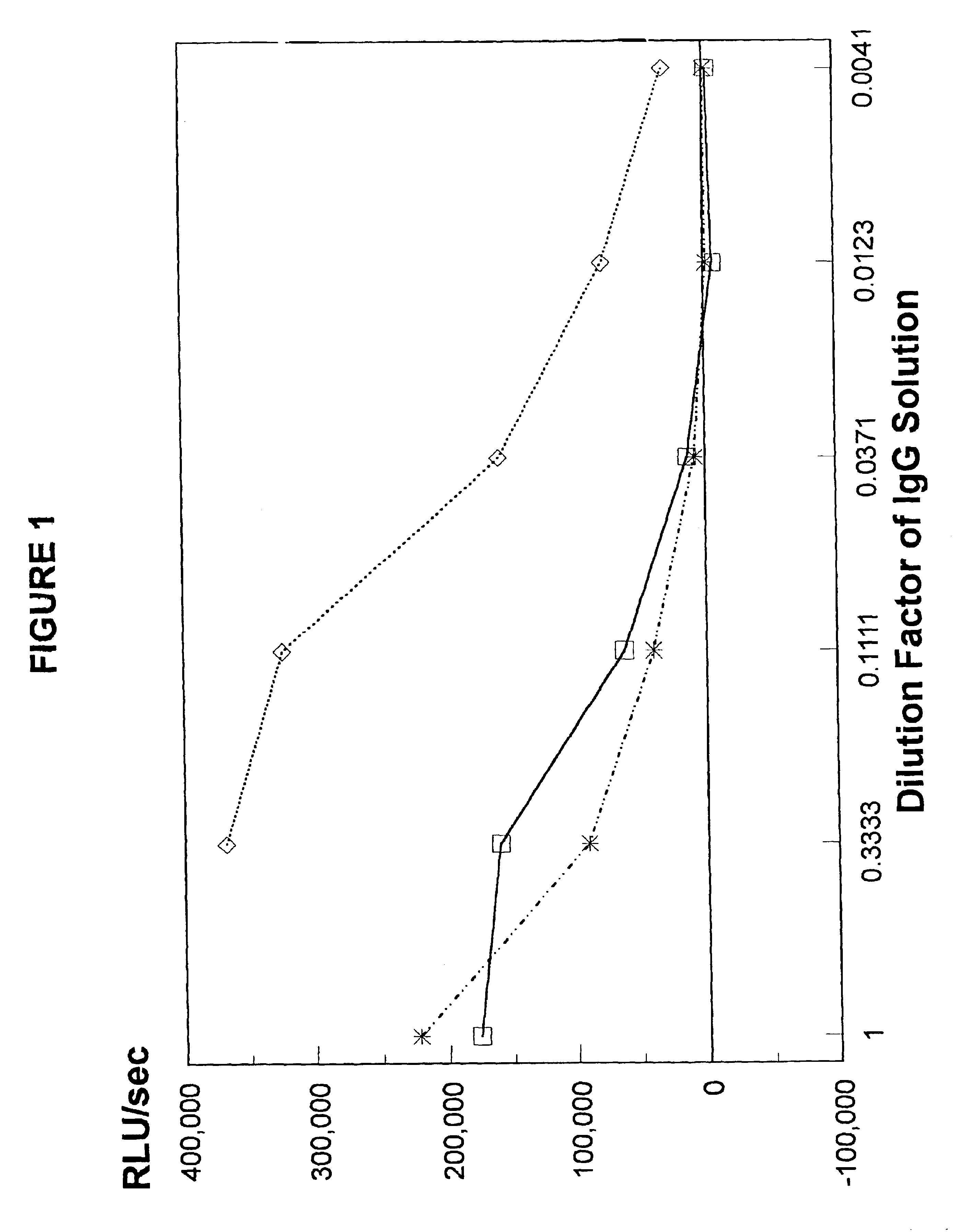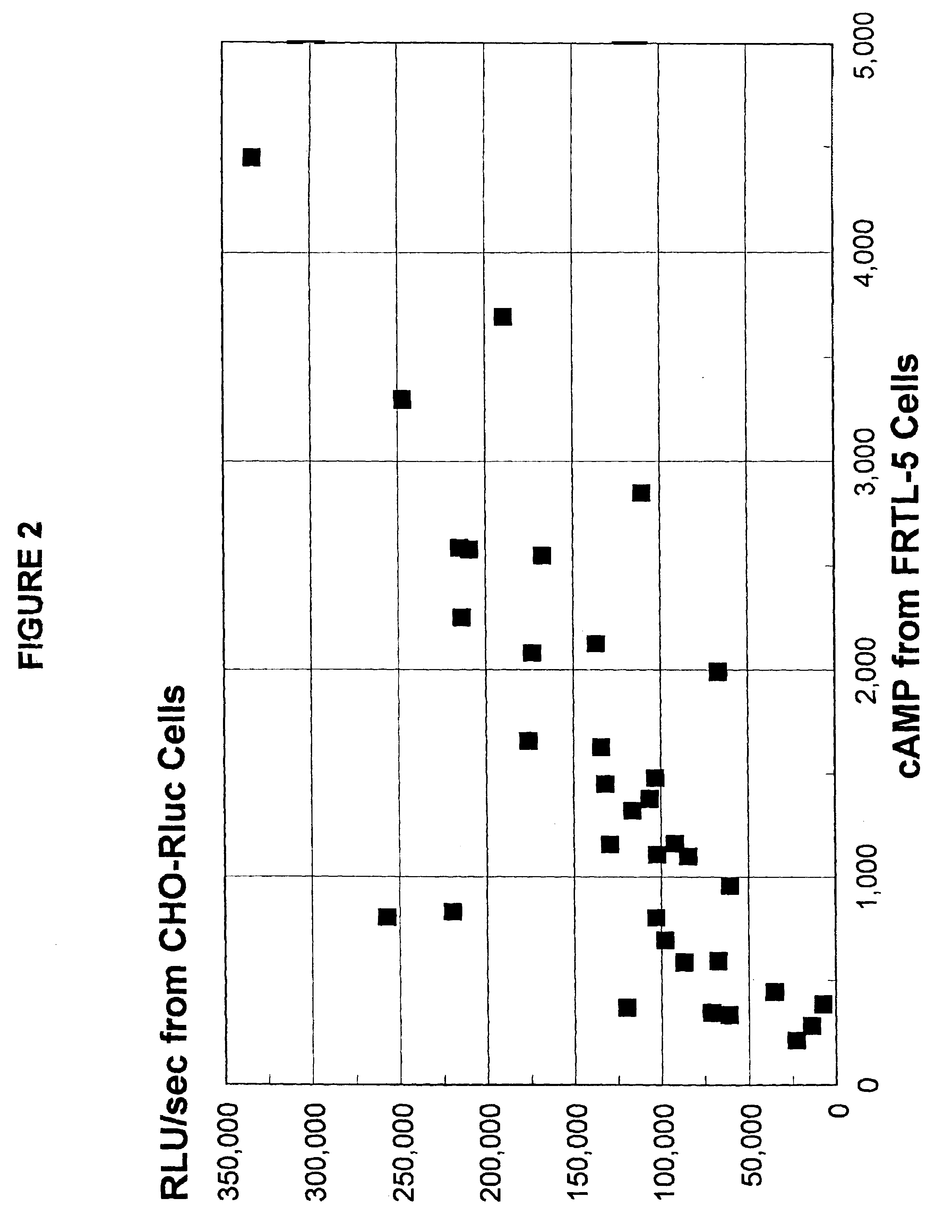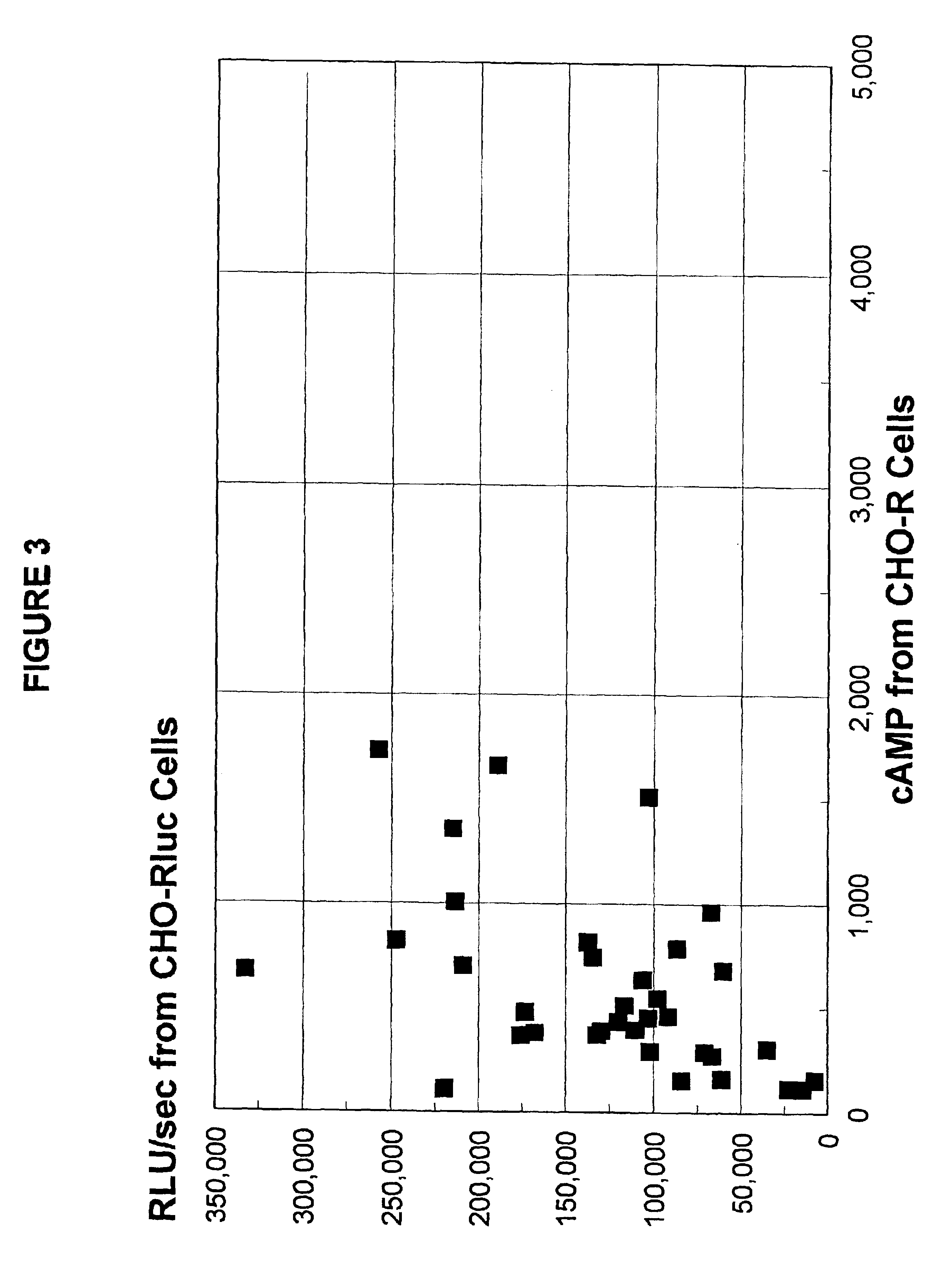Diagnosis of autoimmune disease
a technology for autoimmune diseases and diagnosis, applied in the field of diagnosis, can solve the problems of inability to use widespread methods to measure the tsi or tsab in graves, the growth and over-production of glandular thyroid hormone, and the danger of other manifestations of the diseas
- Summary
- Abstract
- Description
- Claims
- Application Information
AI Technical Summary
Problems solved by technology
Method used
Image
Examples
example 1
Preparation of CHO-Rluc Cells For Testing
In these experiments, CHO-Rluc cells were prepared from W-25 CHO—R cells for use in the testing methods to detect TSI in Graves' disease patients. Pools of puromycin-resistant cells were obtained and tested for light output in response to bovine TSH. Clones with the highest light output were selected for use in the experiments described below.
CHO-Rluc cells were grown in cell culture flasks (e.g., T-225 flasks) in growth medium containing Ham's F-12 medium, 10% FBS (heated at 56° C. for 30 minutes to inactivate complement), 2 mM glutamine, and 1× non-essential amino acids. The flasks were incubated at 35-37° C., in a humidified atmosphere, containing 5% carbon dioxide.
After the cell cultures reached confluence, the medium from each flask was aspirated, and the cell monolayers were washed with HBSS without Ca++ and Mg++. Then, 7 ml of a 0.25% trypsin / 1 mM EDTA solution were added to each flask, and allowed to react with the monolayers for appr...
example 2
CHO-Rluc Assay Plate Preparation and Testing
In these experiments, CHO-Rluc cells prepared as described in Example 1 were used in assays for diagnosis of Graves' disease. To prepare 24 monolayers for testing, 24 wells in a 96-well microtiter plate were first treated by adding 50-100 μL 0.1% gelatin solution (Sigma) to enhance attachment of the cells to the bottom of the 24 wells chosen for the test. Following incubation for approximately 1 minute at room ID temperature, the gelatin solution was removed from each of the wells by aspiration. It was noted that the gelatin can remain on the cells for longer than one minute. The gelatin serves to coat the wells with collagen, so that the cells attach more quickly to the wells and reach confluence more rapidly. However, cells can be planted and grown to confluence without gelatin and still perform well.
A freezer vial of CHO-Rluc cells produced as described in Example 1 was rapidly thawed in a 37° C. water bath to provide approximately 0.4 ...
example 3
Preparation of IgG Samples
In these experiments, patients' IgG was prepared for testing in the present methods. Lyophilized IgG samples from 38 well-known and characterized, untreated Graves' disease patients were kindly provided by Dr. B. Y. Cho (Department of Internal Medicine, Seoul National University, College of Medicine, Seoul, Korea). As most of the samples had been previously tested in standard methods using CHO—R and FRTL-5 cells, these test results were known for 35 of these samples.
In preparation for lyophilization, the IgGs were affinity-purified using protein A-Sepharose CL-4B columns, as known in the art, and then dialyzed against 100 volumes of distilled water at 4° C. The dialysis water was changed every 8 hours over a 2 day period. After removal of denatured protein by centrifugation at 1500×g for 15 minutes at 4° C., the IgG was lyophilized and stored at −20° C. until used in the experiments described herein.
In some experiments, purified untreated Graves' IgG was di...
PUM
| Property | Measurement | Unit |
|---|---|---|
| storage temperature | aaaaa | aaaaa |
| temperature | aaaaa | aaaaa |
| temperature | aaaaa | aaaaa |
Abstract
Description
Claims
Application Information
 Login to View More
Login to View More - R&D
- Intellectual Property
- Life Sciences
- Materials
- Tech Scout
- Unparalleled Data Quality
- Higher Quality Content
- 60% Fewer Hallucinations
Browse by: Latest US Patents, China's latest patents, Technical Efficacy Thesaurus, Application Domain, Technology Topic, Popular Technical Reports.
© 2025 PatSnap. All rights reserved.Legal|Privacy policy|Modern Slavery Act Transparency Statement|Sitemap|About US| Contact US: help@patsnap.com



